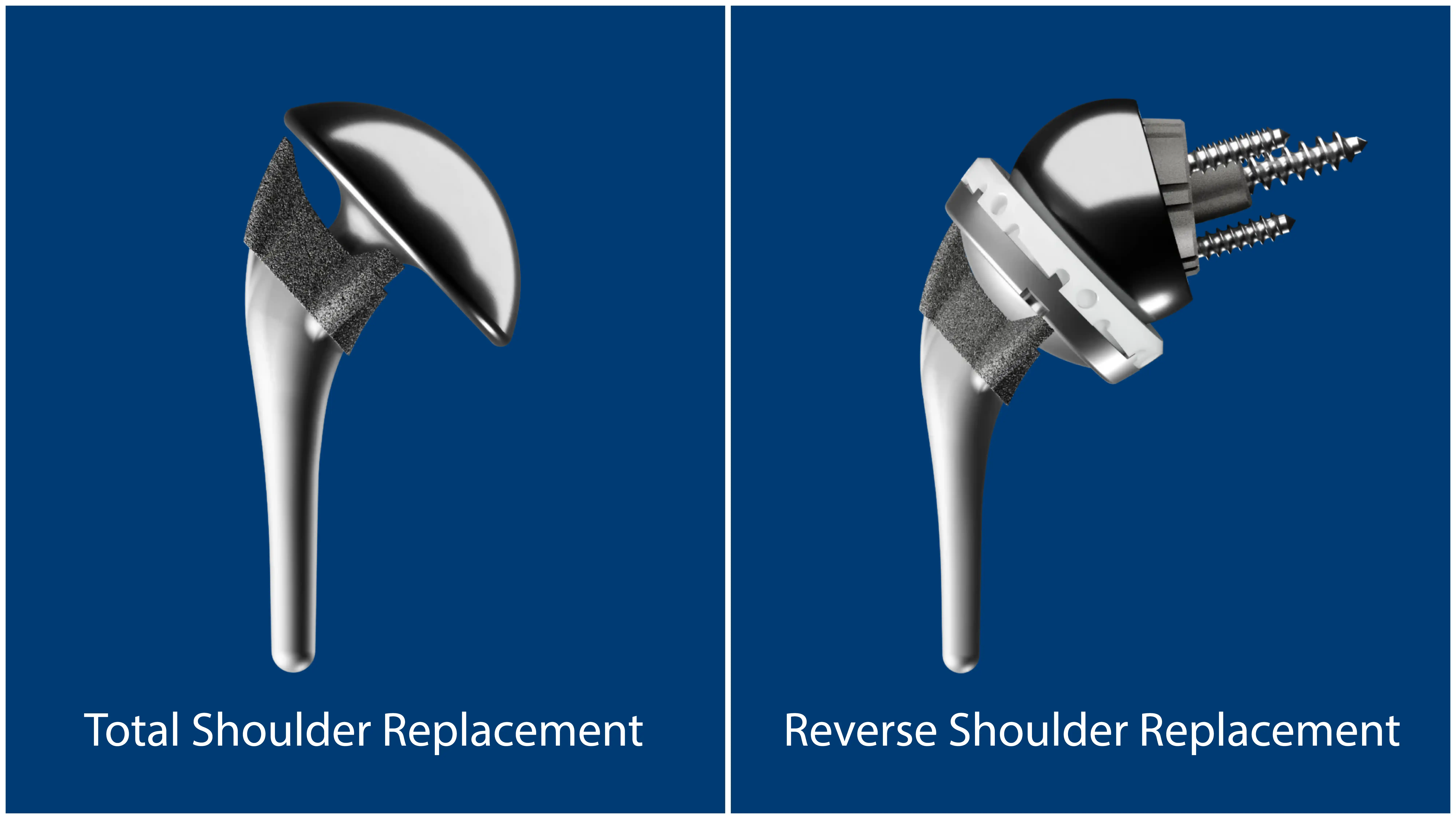If you’ve undergone shoulder replacement surgery, understanding your permanent restrictions is critical for long-term success. In this post, we’ll cover which activities to avoid, why these restrictions matter, and how to adapt your lifestyle to protect your new joint.
Key Takeaways
- Permanent restrictions after shoulder replacement surgery are essential for preventing complications and extending the lifespan of the artificial joint.
- Different types of shoulder replacement surgeries carry specific restrictions, with total shoulder replacement emphasizing heavy lifting avoidance.
- Successful adaptation involves lifestyle modifications and physical therapy
What Are Permanent Restrictions After Shoulder Replacement?
Permanent restrictions after shoulder replacement surgery are guidelines set by experienced shoulder surgeons to ensure the longevity of the artificial joint and prevent complications. The shoulder replacement implant is designed to handle normal, everyday activities such as dressing, eating, light household chores, driving, and recreational activities like golfing or swimming. However, it’s not necessarily meant to withstand the same forces or stresses as a natural, healthy shoulder under heavy strain.
One of the main lifelong restrictions is avoiding heavy lifting with the surgical arm. Most shoulder surgeons recommend not lifting more than 25 to 30 pounds on a regular basis, though this can vary by individual. High-impact sports, heavy weightlifting, and activities that involve sudden or jerky shoulder movements should also be avoided, as they can increase the risk of implant loosening or dislocation over time.
Additionally, patients should be cautious with repetitive overhead movements and avoid extreme ranges of motion, especially motions that combine external rotation and abduction, like reaching far behind the back. Exercises such as push-ups or pull-ups are typically off-limits, as they place excessive stress on the artificial joint. It’s also important to avoid repetitive hammering, drilling, or vibration-heavy tasks with the surgical arm, as these can accelerate implant wear.
Ultimately, shoulder replacement surgery is meant to improve quality of life and allow you to return to many enjoyable and necessary activities, but it comes with the responsibility of protecting the joint for the long term. Following your surgeon’s guidelines and avoiding risky movements or loads will help you maintain the health and function of your new shoulder for years to come. If you’re ever unsure whether a specific activity is safe, it’s best to check in with your doctor or physical therapist.
Types of Shoulder Replacement Surgery and Their Specific Restrictions
Shoulder replacement procedures fall into several categories, each with unique considerations and restrictions. The two main types include total shoulder replacement surgery and reverse total shoulder replacement surgery. In the following sections, we’ll go into detail on the two main types and their respective restrictions.

Anatomic Total Shoulder Replacement Surgery
Anatomic total shoulder replacement surgery is a common procedure where both the ball and socket of the shoulder joint are replaced with artificial components. This surgery aims to restore the natural anatomy and function of the shoulder joint.
Protecting the new joint involves diligently following the recommended restrictions. Activities that place excessive stress on the shoulder, such as heavy lifting and certain sports, should be avoided. Patients should avoid lifting objects over 25 pounds to protect the socket. Push-ups and similar weight-bearing exercises are also discouraged because they can strain the artificial joint.
Adhering to these guidelines reduces the risk of complications and enhances the longevity of the artificial joint.
Reverse Total Shoulder Replacement Surgery
Reverse total shoulder replacement surgery is generally recommended for patients with rotator cuff tears or damage. This procedure reverses the positions of the ball and socket, allowing the deltoid muscle to stabilize the shoulder rather than the damaged rotator cuff. However, it comes with its own set of permanent restrictions to protect the artificial joint and extend its lifespan.
Post-surgery, patients need to be mindful of their daily activities, especially tasks that involve rotation such as reaching behind the back. As they progress through recovery, many patients can adapt to perform most daily activities requiring shoulder mobility.
Avoiding extreme rotation movements and following the surgeon’s personalized recommendations are key to maintaining the stability of the artificial joint.
Managing Daily Life With Permanent Restrictions
Adapting to restrictions after shoulder replacement surgery involves making thoughtful adjustments to your daily routine, especially in the beginning. Routine activities like dressing, cooking, and sleeping often require modifications. For example, choosing loose-fitting clothing that buttons in the front can simplify the dressing process. Supporting your shoulder with a pillow while sleeping helps to prevent unnecessary strain.
It typically takes approximately 4-6 months to resume normal activities after shoulder replacement surgery. As you gradually return to work and hobbies, it’s important to implement joint-protection techniques and maintain open communication with your healthcare team about any challenges. While orthopedic surgeons discourage heavy weightlifting and high-impact activities, most patients find they can develop modified routines that allow for an active, fulfilling lifestyle.
Physical Therapy’s Role in Adapting to Permanent Restrictions
Physical therapy is essential for successful recovery after shoulder replacement surgery. It helps patients regain shoulder function, manage pain, and adapt to permanent restrictions. The pre-surgical preparation phase focuses on improving your shoulder’s condition and establishing baseline strength. Pre-surgery sessions also enhance post-operative recovery, making the rehabilitation process smoother.
Therapists focus on individualized routines that incorporate both range-of-motion and strengthening exercises tailored to daily activities important to the patient. The rehabilitation process follows a gradual progression, starting with basic movements and slowly advancing to more demanding exercises. Functional training is often emphasized to ensure patients can perform routine tasks safely and effectively.
Consistent participation in physical therapy is key to achieving optimal results while learning to protect your new joint during everyday movements.
Mental and Emotional Adjustments
The mental and emotional challenges of living with permanent restrictions after shoulder replacement surgery can be significant. Many patients find success by redefining their recovery goals, focusing on quality of life rather than complete pre-surgery capabilities. This shift in perspective, paired with celebrating milestones along the way, fosters a positive recovery experience. By doing so, most patients can avoid unnecessary stress and strain, leading to regained strength and a more successful recovery.
Summary
In summary, understanding and adhering to permanent restrictions after shoulder replacement surgery is crucial for a successful recovery and maintaining a healthy lifestyle. By following the guidelines provided by an experienced shoulder surgeon, patients can prevent complications and extend the lifespan of their artificial joint.
Embracing the recovery journey with a positive outlook and realistic expectations can lead to a more fulfilling and satisfying life post-surgery. With the right support and adaptations, living with permanent restrictions can become a manageable and even enriching experience.
Frequently Asked Questions
What are the main types of shoulder replacement surgeries?
The main types of shoulder replacement surgeries are total shoulder replacement and reverse total shoulder replacement. Each type addresses specific shoulder conditions and patient needs.
What are some common permanent restrictions after shoulder replacement surgery?
Following shoulder replacement surgery, it is best to avoid lifting weights over 25 pounds, making sudden movements, and participating in high-impact activities. Adhering to these restrictions can significantly aid in your rehabilitation process.
How can physical therapy help in adapting to permanent restrictions?
Physical therapy can assist in adapting to permanent restrictions by managing pain, enhancing mobility, and creating personalized routines to accommodate daily activities.
How can patients cope with the mental and emotional challenges of living with permanent restrictions?
To cope with the mental and emotional challenges of permanent restrictions, set realistic expectations, focus on quality of life, and actively seek support from others. This approach fosters resilience and promotes a healthier mindset.



